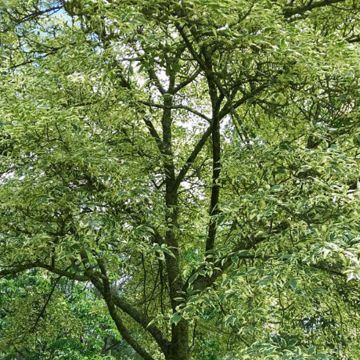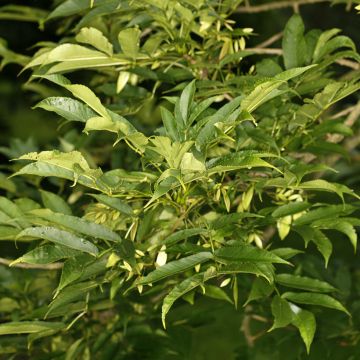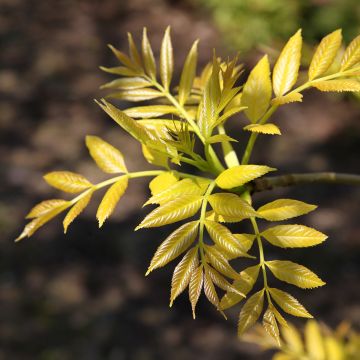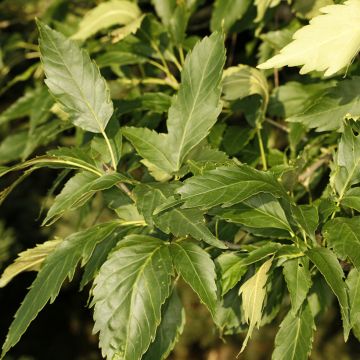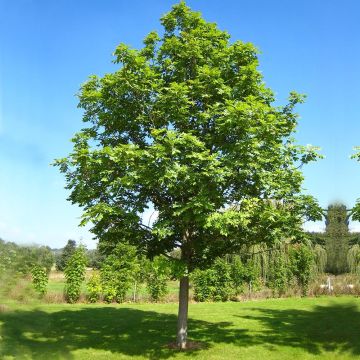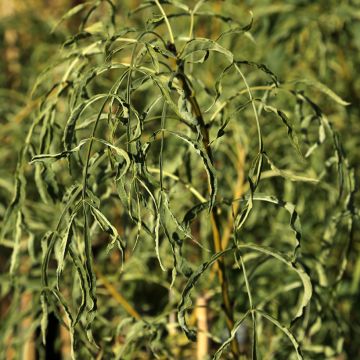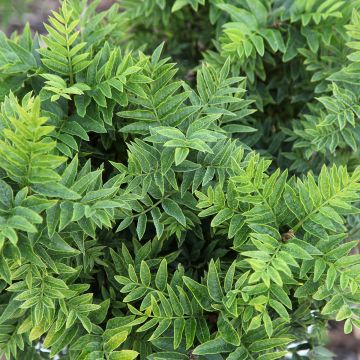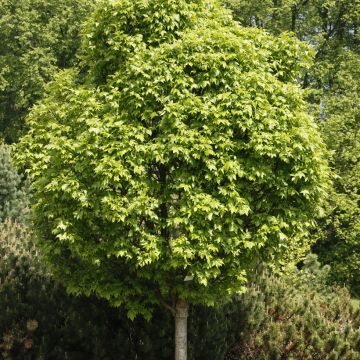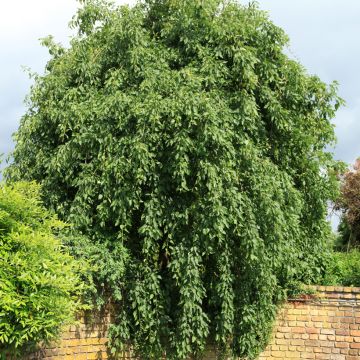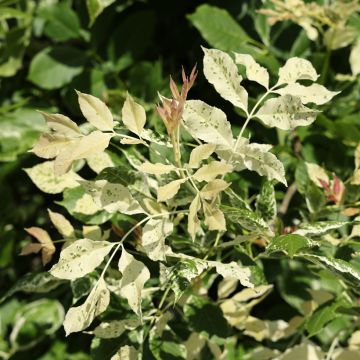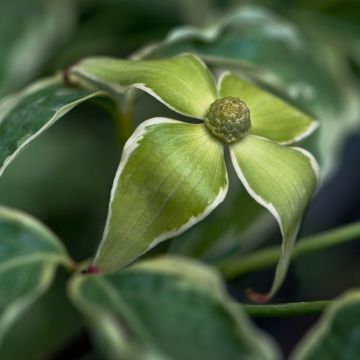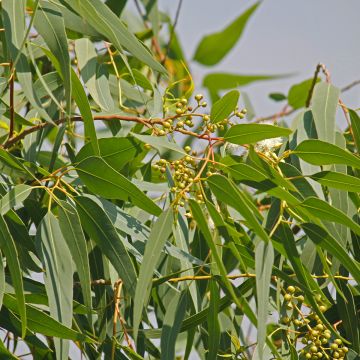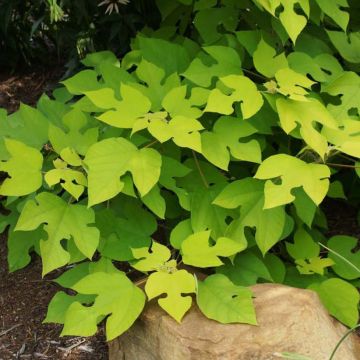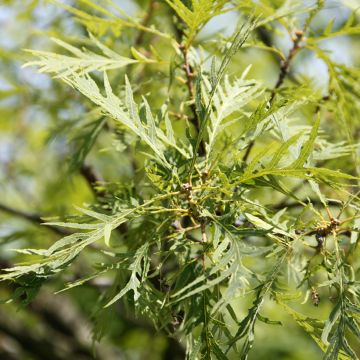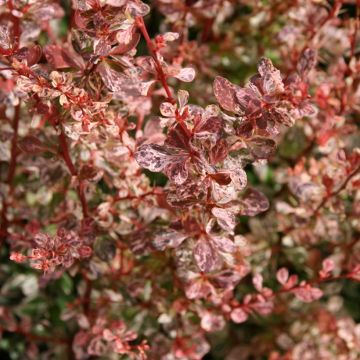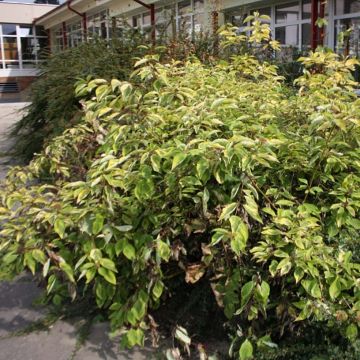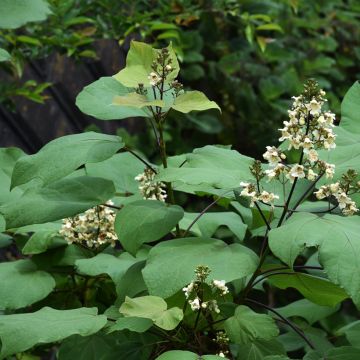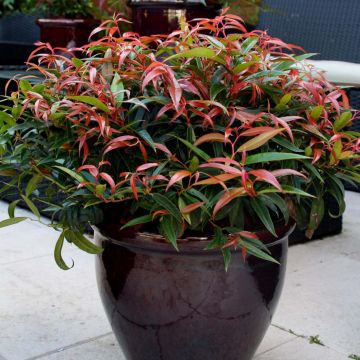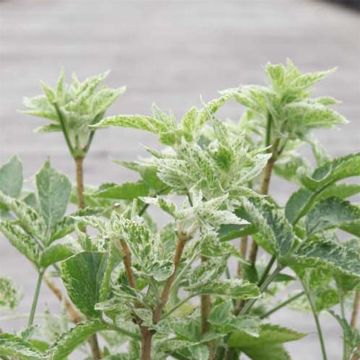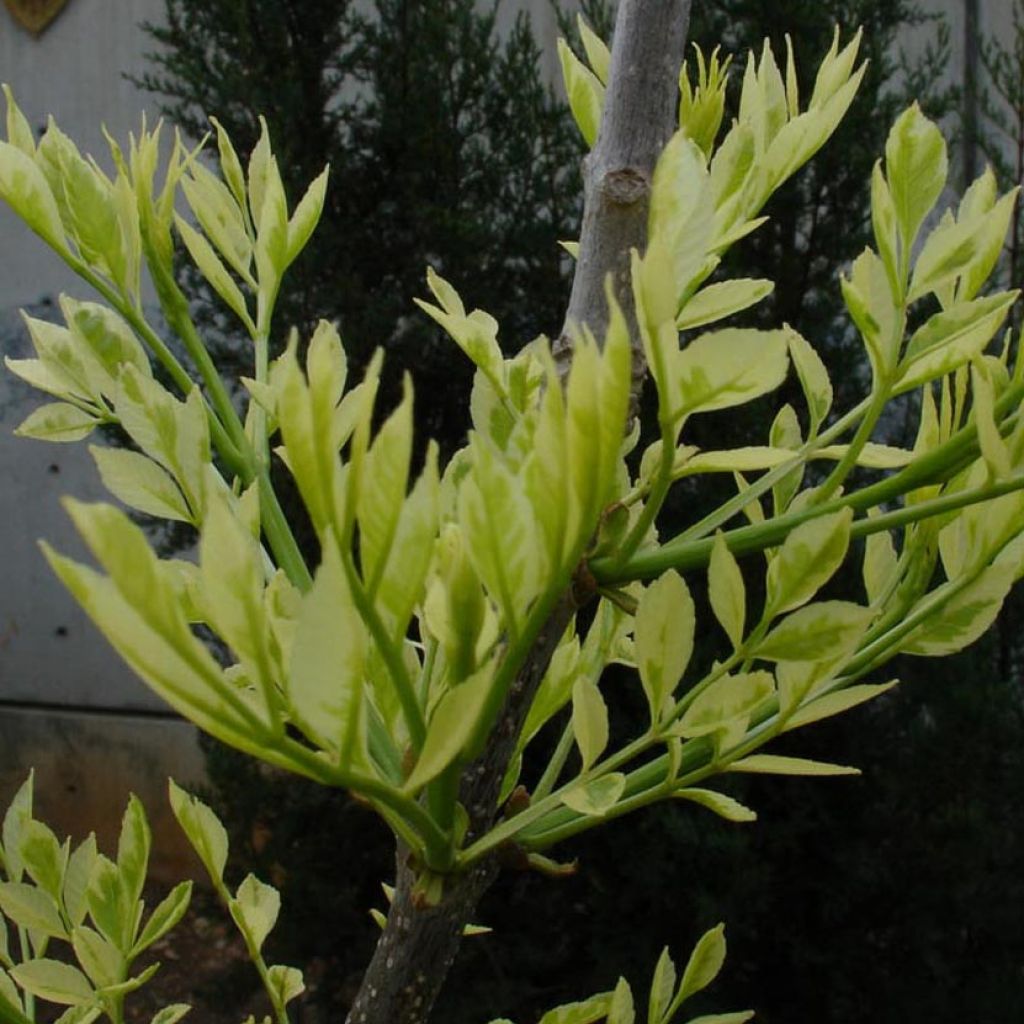

Fraxinus angustifolia Variegata - Ash
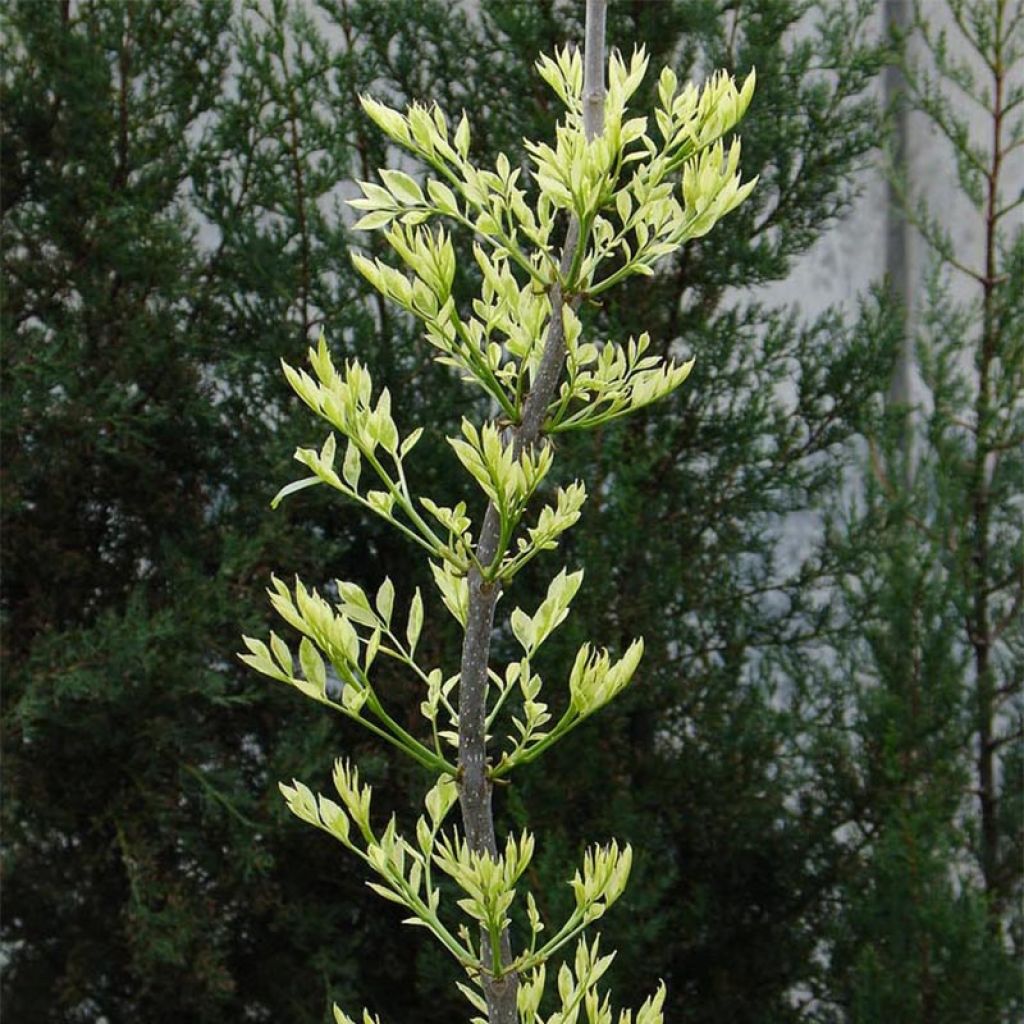

Fraxinus angustifolia Variegata - Ash
Fraxinus angustifolia Variegata - Ash
Fraxinus angustifolia Variegata
Narrow-leaved Ash, Desert Ash
I confirm the rating of 5/5. This seemingly delicate ash tree is tough as nails. It endured the long summer drought and now greatly appreciates the constant rains. To be continued.
NATHALIE , 13/11/2023
This item cannot be shipped to the selected country
Oversize package delivery charge from €6.90
Delivery to Corse prohibited
More information
Schedule delivery date,
and select date in basket
This plant carries a 24 months recovery warranty
More information
We guarantee the quality of our plants for a full growing cycle, and will replace at our expense any plant that fails to recover under normal climatic and planting conditions.
Oversize package: home delivery by special carrier from €6.90 per order..
Express home delivery from €8.90.
Delivery to Corse prohibited: UE law prohibits the import of this plant from mainland France to Corse as part of the fight against Xylella fastidiosa. Please accept our sincere apologies.
More information

Does this plant fit my garden?
Set up your Plantfit profile →
Description
The Fraxinus angustifolia 'Variegata' is an astonishing and rare variegated foliage form of the Narrow-leaved Ash. Its very thin leaves start off as green heavily maculated with white, turning beautiful shades of red and copper in autumn. Growing quite slowly and smaller than the species, this tree develops an elegant habit over the years, composed of a very upright trunk supporting a light and rounded crown that provides shade in summer. In a free form, it is remarkably luminous and looks splendid in a garden. Its southern origins do not prevent it from being very cold-hardy. Provide this delightfully bright tree with an open location and any deep and moisture-retentive soil.
The Fraxinus angustifolia is a tree of the olive family, just like the olive tree and the lilac. It is native to southern Europe, where it is common along rivers and riverbanks. The 'Variegata' form, discovered before 1889, stands out with its more modest growth and variegated green and white foliage.
The habit of this ash tree is generally conical. It develops a fairly short and upright trunk, well cleared, topped by a rounded crown, rather closed when the tree is young, opening up with age. At maturity, this crown is airy, with a light appearance and the bark covering the trunk becomes grey, deeply fissured and scaly. The 'Variegata' cultivar has a slow growth rate: at the age of 10, it will have reached a height of 3 m (10 ft). At maturity, it generally reaches a height of 10 m (32 ft), with a crown measuring approximately 6 to 7 m (19 ft to 23 ft) in spread, remaining a modest tree, perfect in an ornamental garden. The deciduous foliage, very delicate, consists of compound leaves with 3 to 11 very narrow and lanceolate leaflets, measuring 5 to 10 cm (2 to 4 in) in length. Almost pale yellow when they first emerge, they then take on their characteristic color, a rather dark green maculated with white and cream-white. In autumn, they adorn themselves with beautiful shades of orange, red and copper for 3 to 5 weeks if strong winds do not blow them away. Flowering occurs in spring, before the foliage appears, in the form of yellow-cream panicles. After pollination, they give way to samaras measuring 2 to 4.5 cm (0.8 to 1.8 in) in length.
Perfectly hardy and with limited requirements, the Narrow-leaved Ash can tolerate any non-scorching exposure and adapts to any ordinary soil, including limestone. A particularly healthy tree, it is starting to gain popularity in gardens because, in a free form, its foliage and elegant habit give it true ornamental qualities. The 'Variegata' cultivar is much rarer, despite its obvious beauty and moderate growth. It will find its place as a standalone specimen in a medium to large-sized garden, where it will provide a pleasant shady spot in summer. To enhance this little corner of shade, consider planting some bulbs for spring and/or some shade-loving perennials for summer at its base.
Report an error about the product description
Fraxinus angustifolia Variegata - Ash in pictures
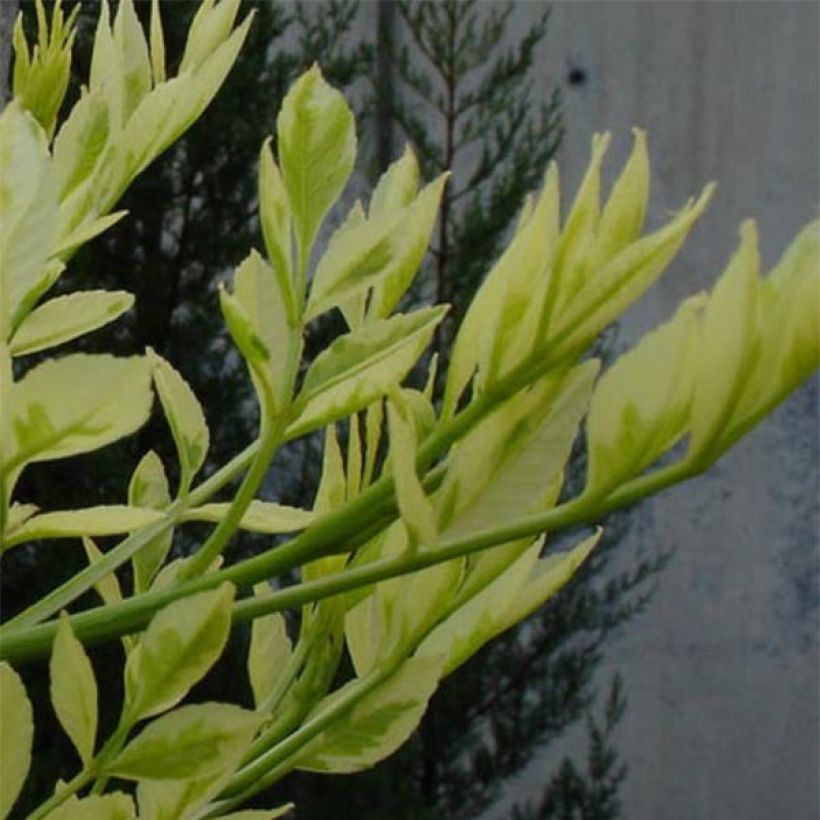

Plant habit
Flowering
Foliage
Safety measures
Botanical data
Fraxinus
angustifolia
Variegata
Oleaceae
Narrow-leaved Ash, Desert Ash
Mediterranean
atteinterespiratoire
Cette plante peut entraîner des symptômes allergiques.
Evitez de la planter si vous ou vos proches souffrez de rhinite saisonnière ("rhume des foins").
Davantage d'informations sur https://plantes-risque.info
Other Fraxinus - Ash tree
Planting and care
Plant your Fraxinus angustifolia 'Variegata' in autumn or spring, choose a clear location, in non-scorching sunlight, where the soil is deep and keep in mind the space it will take up in the long term. If necessary, create a drainage pit with rocks if your soil is heavy. If your soil is poor, adding leaf compost will be beneficial. Maintain regular watering during the summer following planting and make sure to protect it from prolonged droughts for another year, mulching can help retain moisture at the base and reduce the need for watering. It is important to keep in mind that this riverside tree needs consistently moist soil, at least at depth. It is perfectly frost resistant. Pruning involves balancing the tree's habit every 3 years or so by opening up the center of the canopy.
Planting period
Intended location
Care
-
, onOrder confirmed
Reply from on Promesse de fleurs
Striking foliage shrubs
Haven't found what you were looking for?
Hardiness is the lowest winter temperature a plant can endure without suffering serious damage or even dying. However, hardiness is affected by location (a sheltered area, such as a patio), protection (winter cover) and soil type (hardiness is improved by well-drained soil).

Photo Sharing Terms & Conditions
In order to encourage gardeners to interact and share their experiences, Promesse de fleurs offers various media enabling content to be uploaded onto its Site - in particular via the ‘Photo sharing’ module.
The User agrees to refrain from:
- Posting any content that is illegal, prejudicial, insulting, racist, inciteful to hatred, revisionist, contrary to public decency, that infringes on privacy or on the privacy rights of third parties, in particular the publicity rights of persons and goods, intellectual property rights, or the right to privacy.
- Submitting content on behalf of a third party;
- Impersonate the identity of a third party and/or publish any personal information about a third party;
In general, the User undertakes to refrain from any unethical behaviour.
All Content (in particular text, comments, files, images, photos, videos, creative works, etc.), which may be subject to property or intellectual property rights, image or other private rights, shall remain the property of the User, subject to the limited rights granted by the terms of the licence granted by Promesse de fleurs as stated below. Users are at liberty to publish or not to publish such Content on the Site, notably via the ‘Photo Sharing’ facility, and accept that this Content shall be made public and freely accessible, notably on the Internet.
Users further acknowledge, undertake to have ,and guarantee that they hold all necessary rights and permissions to publish such material on the Site, in particular with regard to the legislation in force pertaining to any privacy, property, intellectual property, image, or contractual rights, or rights of any other nature. By publishing such Content on the Site, Users acknowledge accepting full liability as publishers of the Content within the meaning of the law, and grant Promesse de fleurs, free of charge, an inclusive, worldwide licence for the said Content for the entire duration of its publication, including all reproduction, representation, up/downloading, displaying, performing, transmission, and storage rights.
Users also grant permission for their name to be linked to the Content and accept that this link may not always be made available.
By engaging in posting material, Users consent to their Content becoming automatically accessible on the Internet, in particular on other sites and/or blogs and/or web pages of the Promesse de fleurs site, including in particular social pages and the Promesse de fleurs catalogue.
Users may secure the removal of entrusted content free of charge by issuing a simple request via our contact form.
The flowering period indicated on our website applies to countries and regions located in USDA zone 8 (France, the United Kingdom, Ireland, the Netherlands, etc.)
It will vary according to where you live:
- In zones 9 to 10 (Italy, Spain, Greece, etc.), flowering will occur about 2 to 4 weeks earlier.
- In zones 6 to 7 (Germany, Poland, Slovenia, and lower mountainous regions), flowering will be delayed by 2 to 3 weeks.
- In zone 5 (Central Europe, Scandinavia), blooming will be delayed by 3 to 5 weeks.
In temperate climates, pruning of spring-flowering shrubs (forsythia, spireas, etc.) should be done just after flowering.
Pruning of summer-flowering shrubs (Indian Lilac, Perovskia, etc.) can be done in winter or spring.
In cold regions as well as with frost-sensitive plants, avoid pruning too early when severe frosts may still occur.
The planting period indicated on our website applies to countries and regions located in USDA zone 8 (France, United Kingdom, Ireland, Netherlands).
It will vary according to where you live:
- In Mediterranean zones (Marseille, Madrid, Milan, etc.), autumn and winter are the best planting periods.
- In continental zones (Strasbourg, Munich, Vienna, etc.), delay planting by 2 to 3 weeks in spring and bring it forward by 2 to 4 weeks in autumn.
- In mountainous regions (the Alps, Pyrenees, Carpathians, etc.), it is best to plant in late spring (May-June) or late summer (August-September).
The harvesting period indicated on our website applies to countries and regions in USDA zone 8 (France, England, Ireland, the Netherlands).
In colder areas (Scandinavia, Poland, Austria...) fruit and vegetable harvests are likely to be delayed by 3-4 weeks.
In warmer areas (Italy, Spain, Greece, etc.), harvesting will probably take place earlier, depending on weather conditions.
The sowing periods indicated on our website apply to countries and regions within USDA Zone 8 (France, UK, Ireland, Netherlands).
In colder areas (Scandinavia, Poland, Austria...), delay any outdoor sowing by 3-4 weeks, or sow under glass.
In warmer climes (Italy, Spain, Greece, etc.), bring outdoor sowing forward by a few weeks.

































